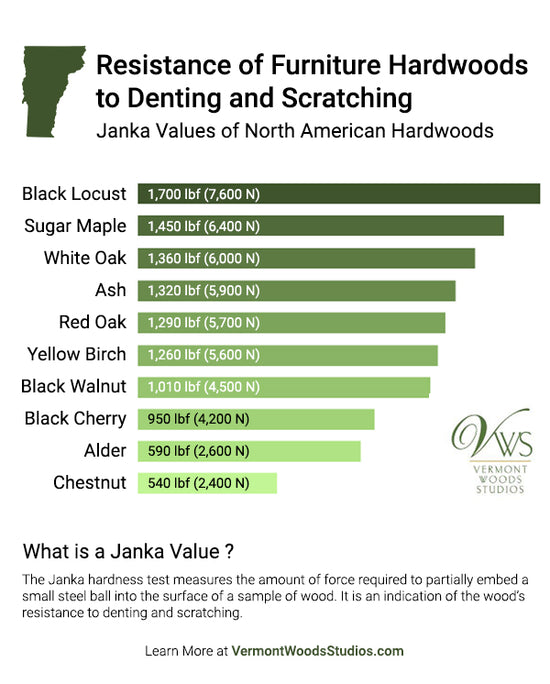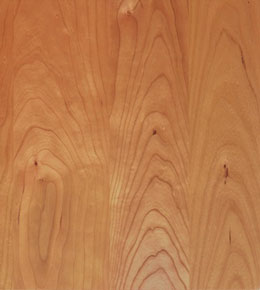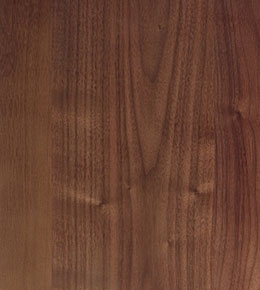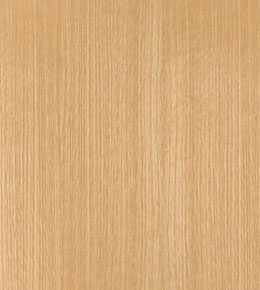Mahogany Wood
-
Mahogany is an exotic wood prized for its durability, workability, and elegant look. It has a pink or reddish-brown hue that deepens over time. The grain is straight and uniform, typically with relatively few knots or blemishes.
-
Characteristics of Mahogany Wood
- Color: Pink or Reddish-Brown
- Source: Big Leaf Mahogany Tree (Swietenia macrophylla)
- Durability: 800 on the Janka scale
- Cost: $6-28+ per board foot
- Common Uses: Paneling, Furniture, Cabinets, Flooring, Carvings
Although Mahogany looks great and is easy to work with, there are environmental concerns related to the harvesting and transport of the wood. Traditional Honduran Mahogany, or Broad-Leaf Mahogany, only grows in tropical forests in Central and South America, and it has been driven to the brink of extinction by illegal logging of the Amazon and surrounding forests. African Mahogany, which is a different species that is sometimes grown in orchards in parts of Africa, still has to be shipped across the Atlantic Ocean to US consumers.
Because of these high environmental costs, we suggest looking for alternatives to Mahogany. Cherry and walnut wood are similar in appearance and grain, but grow domestically and carry a significantly lower ecological footprint.
Boards can be exceptionally large because the trees may grow to epic proportions, sometimes reaching six feet in diameter. For this reason, it was once quite common to see mahogany paneling in high-end design, but the exotic wood was also incorporated into furniture and used for cabinetry quite a bit too.
Types of Mahogany
Although there are many imitators and a number of varieties within the Meliaccae family, which some consider to be mahogany, genuine mahogany only comes from the genus Swietenia, which includes three types of trees:
- Swietenia macrophylla (Honduran mahogany, West Indian mahogany, big-leaf mahogany)
- Swietenia humilis (Mexican mahogany, Pacific Coast mahogany, Honduras mahogany)
- Swietenia mahogani (Cuban mahogany, American mahogany, small-leaved mahogany, West Indian mahogany)
Theres quite a bit of overlap in common names, even within the genuine mahoganies, which can make identification and discussion confusing. Furthermore, the characteristics of each differ, so some mahoganies are incredibly cheap to purchase, while other variants of this exotic wood rank among the most expensive woods in the world because of their quality and scarce availability.
That said, all genuine mahogany is classified as either vulnerable to extinction or endangered. Illegal harvesting is a major problem, contributing to the destruction of rainforests, devastating the homes of indigenous people, threatening wildlife, and feeding international crime rings.
Oftentimes, falsified records or bribery is used to export wood illegally, and regrettably, the United States is the major global importer, accepting about 80% of the stock. Many furniture makers knowingly use unlawfully harvested mahogany anyway or turn a blind eye to the problem as if not knowing where their stock comes from clears them from wrongdoing, regardless of the damage being caused and the fact that its illegal to trade, import, and possess it.
What are the Common Uses of Mahogany Wood?
Americas love of mahogany wood dates back to colonial times, particularly in furniture because it is durable and takes to ornate carving well. Its also used in paneling, cabinetry, flooring, and doors. Its rot-resistance also made it somewhat popular for decking and boat making in the past. In modern times, it still gets used to make instruments, especially guitars.
What Does the Grain Pattern of Mahogany Wood Look Like?
Mahogany wood is straight-grained and is generally free of knots and defects.
Is Mahogany a Hardwood or Softwood?
To clarify, hardwood and softwood refer to the type of tree wood comes from, and do not necessarily reflect the woods durability. That in mind, hardwoods are usually leafy trees, or dicots, and softwoods are usually conifers, from the gymnosperm group. Common examples of hardwoods are oak, walnut, cherry, and maple, while softwoods include things like cedar, fir, and pine.
Given Honduran mahoganys alternate common name, big-leaf mahogany, its easy to ascertain that its a hardwood.
-

-
How Dense/Hard is Mahogany Wood?
Those concerned with the density or resilience of wood will want to look at Janka numbers. During a Janka test, the amount of force required to embed a small steel ball half-way into the wood is measured. Janka ratings can be displayed with a number followed by lbf for pounds of force, or by the number followed by the word Janka.
Honduran mahogany measures 800 Janka. While that makes it harder than options like eastern white pine and Douglas fir, at 420 Janka and 660 Janka, respectively, it falls well below most commonly-used woods. Take, for example, cherry at 995 Janka, black walnut at 1,010 Janka, white oak at 1,360 Janka, and sugar maple at 1,450 Janka.
Where Does Mahogany Come From?
Mahogany wood often comes from Swietenia macrophylla trees, which are native to South America and Mexico. These beautiful slow-growing giants can reach up to 200 feet tall, with trunks that are 6 feet in diameter. Although the average size is closer to 130 feet tall, it still takes decades for Swietenia macrophylla to reach these heights and old growth is most at-risk for illegal harvest.
Additional sources of genuine mahogany are Swietenia humilis and Swietenia mahogani. Swietenia humilis grows along the Pacific Coast of Central America, while Swietenia mahogani grows from the southern tip of Florida through the West Indies.
Is Mahogany Eco-Friendly? Are Mahogany Trees Endangered?
Swietenia mahogani was the original mahogany early settlers fell in love with, but it has been exploited to the point its now endangered.
Swietenia macrophylla and Swietenia humilis are considered threatened. This means theyre at risk of becoming endangered if local populations cant control logging. Although regulations exist to prevent illegal harvesting, current protocols have been largely ineffective.
Considering the level of exploitation, deforestation, and the amount of illegal harvesting occuring, mahogany is not an eco-friendly choice at all. Adding to this, most mahogany wood that makes its way into the United States is shipped across oceans and continents, further increasing the carbon footprint.
Alternatives to Mahogany
Because the environmental cost of using mahogany is high, purchasing alternatives is best. At Vermont Woods Studios, all our natural wood furniture is built here in the United States by talented craftsmen who use domestic hardwoods and care about quality and sustainability. Its this dedication, paired with our quality guarantee and top-notch service, that have earned us countless five-star reviews.
For indoor use, we think the best alternative to mahogany is cherry wood. For outdoor use, consider cedar, which grows domestically, or check out our POLYWOOD outdoor furniture made from recycled HDPE plastic.
Read More on the Blog
-
5 Exotic Hardwoods to Avoid & Why
Read MoreWood is generally an earth friendly material because it is renewable, meaning it grows back and isn’t finite like oil, metals, or even rock. But not all species of wood are inherently sustainable.
-
FSC Certified Wood: Everything You Need to Know
Read MoreSupporters of the sustainable American-made furniture movement prefer the use of domestic wood over the use of imported FSC certified wood.
-
Hardwood Furniture Buyer's Guide, Part 1
Read MoreThis hardwood dining table, buffet and chair set is made of American black cherry wood. Mortise and tenon joints are used as well as dovetails in the drawers of the buffet.
-
5 Wood Sourcing Certifications
Read MoreSustainable wood sourcing is essential to protecting forests and conserving resources for future generations. By understanding what each designation stands for, you can make informed decisions when purchasing.
-
Wood Furniture Buyer's Guide
Read MoreShopping online for high quality wood furniture requires some research. After all, fine furniture is a big investment.
Other Types of Wood Species
-

Cherry Wood
More About Cherry -

Walnut Wood
More About Walnut -

Oak Wood
More About Oak -

Maple Wood
More About Maple






